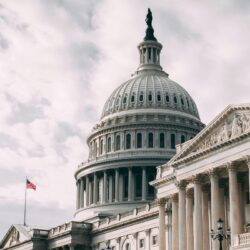 Public Policy
Public Policy Tapping the Tourism Potential of Pot: Lessons From a New Gold Rush

Hmm. Besides Colorado, where else could we research marijuana tourism? Perhaps the Netherlands …
This post originally appeared on SAGE Connection.
***
Last November there was an election result with far-reaching consequences that didn’t involve the White House, California, and three other U.S. states, voted to legalize the recreational use of marijuana. That California vote in particular, predict the authors of a recent article in the journal SAGEOpen, is likely a tipping point on the road to ending the prohibition on pot nationally.
Those authors – Soo Kang, Jospeh O’Leary and Jeffrey P. Miller – don’t approach marijuana from the traditional academic vantages of medicine or criminology. No, they study hospitality, and as their article, “From Forbidden Fruit to the Goose that Lays Golden Eggs: Marijuana Tourism in Colorado,” suggests, they focus on a particular form of destination travel.

Jeffrey Miller, left, and Soo Kang
The learn more, we talked with two of the paper’s three authors. Kang is an associate professor in the Hospitality Management Program at Colorado State University. Her main research area is consumer behaviors in the hospitality and tourism areas. Miller has 20 years’ experience in the food service industry and is currently associate professor and program director for the Hospitality Management program at Colorado State.
How do you define marijuana tourism? Who takes part in it?
Marijuana tourism is a special interest tourism that includes the consumption of marijuana as component of the total tourist experience at a destination. It includes not only those who come to a place because of the availability of marijuana, but also those who choose to consume it as a secondary activity while visiting a place where it is legal.
Would you please summarize the main arguments for and against the legalization of marijuana for recreational purposes?
The most popular argument from supporters are its economic impacts. Marijuana products are heavily taxed, and its tax revenues are expected to be significant for state governments. For example, Colorado collected $135 million in tax and fees from the marijuana industry in 2015. The tax and fee revenues were distributed into regulatory and public-safety efforts, rural school construction, and youth drug prevention and abuse programs. Additionally, the marijuana industry is expected to create more jobs and to stimulate direct and indirect economic activities in states. Also, legalization will free up some law enforcement resources for redeployment in non-drug offense areas.
Opponents of legalization focus mostly on the drug’s long-term physical and mental health effects, including the brain development and addiction problems of youth and children. Other negative social costs include increased school suspensions, marijuana-related traffic deaths, pet poisonings, lab explosions, and drug-related crimes committed outside the legal parameters of recreational or medical marijuana.
In the tourism context, marijuana is still classified as an illegal drug at a federal level and has a social stigma attached to it. Some states may be driving away tourists who disdain marijuana. For example, some opponents in Colorado claimed that legalization has discouraged family-oriented and health-conscious tourists as visitors to the state.
 What can states learn from studying the economic benefits of marijuana tourism in Colorado two years after legalization? What effects will they have to wait longer to see?
What can states learn from studying the economic benefits of marijuana tourism in Colorado two years after legalization? What effects will they have to wait longer to see?
It is natural that when controversial issues (e.g., gambling, marijuana) are discussed from a legal perspective, many proponents use positive economic impacts as a strong advocate point because it is easy to measure and persuasive to justify the legalization. Direct economic impacts such as tax revenue, sales volume, job creation, etc. have been reported upon and analyzed since legalization. As noted above, the Marijuana Policy Group (associated with the University of Colorado College of Business) issued a study in October 2016 suggesting that the marijuana industry has created 18,000 new full-time job equivalencies and has directly and indirectly generated $2.4 billion in economic activity in Colorado. Outside the direct sales channel, there has been job growth in warehouse activities, lighting and irrigation companies, and an increase in services to the industry like lawyers, book-keepers, etc.
Tax revenues are already three times that of those coming from alcohol sales and projections are for marijuana taxes to outstrip cigarette taxes by 2020.
There is not enough economic data supporting or disputing to what extent the marijuana industry may have influenced hospitality and tourism industry. We need more hard numbers to evaluate its contribution to various economic activities associated with hospitality and tourism.
More importantly, along with economic impacts, social impacts (costs) should be counter-weighted to draw a full picture in evaluating the success of legalization. Assessing social costs in tourism developments is challenging in that they are not as explicit as economic impacts, takes longer time to measure, and can be subjective. Understanding the social impacts on visitors, residents, destinations, and states is something that needs to be done in the long term.
This U.S. election season, several states had the legalization of marijuana (whether for medicinal or recreational purposes) on their ballots. In what ways do you think the results will impact the movement to legalize marijuana in the nation?
As of November 10, 2016, four additional states, California, Nevada, Maine, and Massachusetts, all voted in favor of legalized use, sale, and consumption of recreational marijuana, making 2016 a watershed year for recreational marijuana legalization. In particular, the passage of legalization in California will be viewed as a “tipping point” toward ending prohibition nationally. California is the world’s sixth largest economy, only outpaced by the US as a whole, China, Japan, Germany, and the UK. Tax revenue from recreational marijuana legalization in California is estimated to be between $1 and $1.5 billion. This level of increased tax revenue will likely make other states consider legalization as a viable economic development activity in their state.
All eight states with legalized recreational marijuana so far had legalized medical marijuana for several years preceding the approval of recreational marijuana. In the November 2016 election cycle, three further states, Florida, North Dakota, and Arkansas, approved medical marijuana initiatives. These states may see medical marijuana legalization as a stepping stone for future legalization of marijuana for recreational purposes. For some states, it is no longer a matter of ‘whether or not’ they legalize it; it becomes more ‘how’ they implement the legalization.
It seems inevitable that more states will legalize recreational marijuana. For the foreseeable future, we estimate that less than 50 percent of the states that will legalize marijuana due to nature of social mores in those states, but with many states clamoring for new revenue streams, this may be an over-estimation. Until most states have legalized marijuana for medical and/or recreational purposes, we do not anticipate the federal government relaxing its regulatory stance.
As the legalization of marijuana continues to become more widespread, how might the marijuana tourism industry change?
As more states legalized recreational marijuana in 2016, we will see significant changes in a dynamic landscape of the marijuana tourism market. First, there will more competition for the marijuana tourist dollars. As more states legalize there will be less of an impact factor in choosing a destination that does allow it. Therefore, a novelty effect enjoyed by early adopting states, Colorado, Washington, Oregon, and Alaska, will wear off eventually as more people have an access to recreational marijuana legally or closer to their own jurisdictions. Therefore, the early adopting states should come up with long-terms plans on how to maintain or develop the industry in a sustainable way, weathering future competitions and addressing health and social problems.
Along with declining prices for recreational marijuana as competition increases, it is likely that the consumption will increase. Mark Twain once said, “When everyone is looking for gold, it is a good time to be in the pick and shovel business.” We think the hospitality and tourism industry can take advantage from this green rush by understanding the market well and finding a niche market for their own profitability.
The widespread of legalization will almost certainly change the public’s perceptions about marijuana consumption. Negative stigma attached to marijuana will likely shrink, but the tourism industry in conjunction with marijuana industry should educate the public about careful consumption. This way, the industry will evolve in a sustainable way for a longer term. Finally, more systematic and constructive tourism research agendas should be developed and implemented to understand this unique but still controversial tourism segment.
In your SAGE Open article, you listed several research areas for hospitality and tourism researchers to explore. Of these, which do you think are the most critical?
As we are in an early stage of development, we believe there are two areas that deserve immediate attentions from researchers and industry professionals. First, we need to understand who those visitors are to marijuana tourism markets. From a tourism perspective, it is critical to profile visitors’ demographic, social, and psychographic characteristics. Like other tourism segments, their perceptions and behaviors during their vacations or visits will render important cues to understand this unique market.
Second, researchers should also investigate how residents have taken in this law change. They are the ones who voted for legalization but also the ones who are affected by various impacts, including negative social and cultural impacts, from an influx of visitors. Comparison of before and after perception of legalization among residents would generate an interesting picture of how host communities have perceived the aftermath of the legalization. This topic can be investigated with quality of life issues, which eventually affect residents’ support for future development with the legalization.


























































































